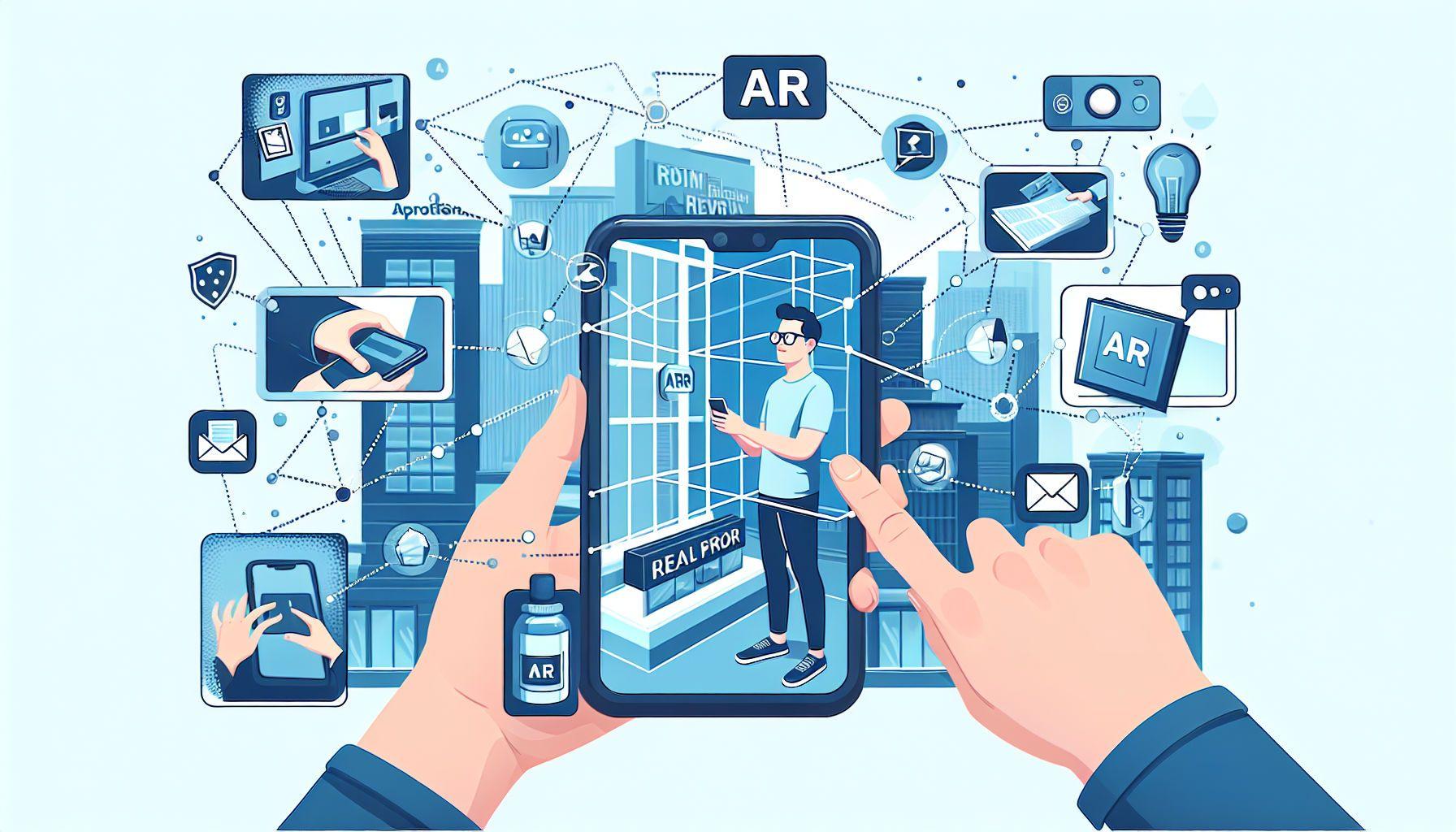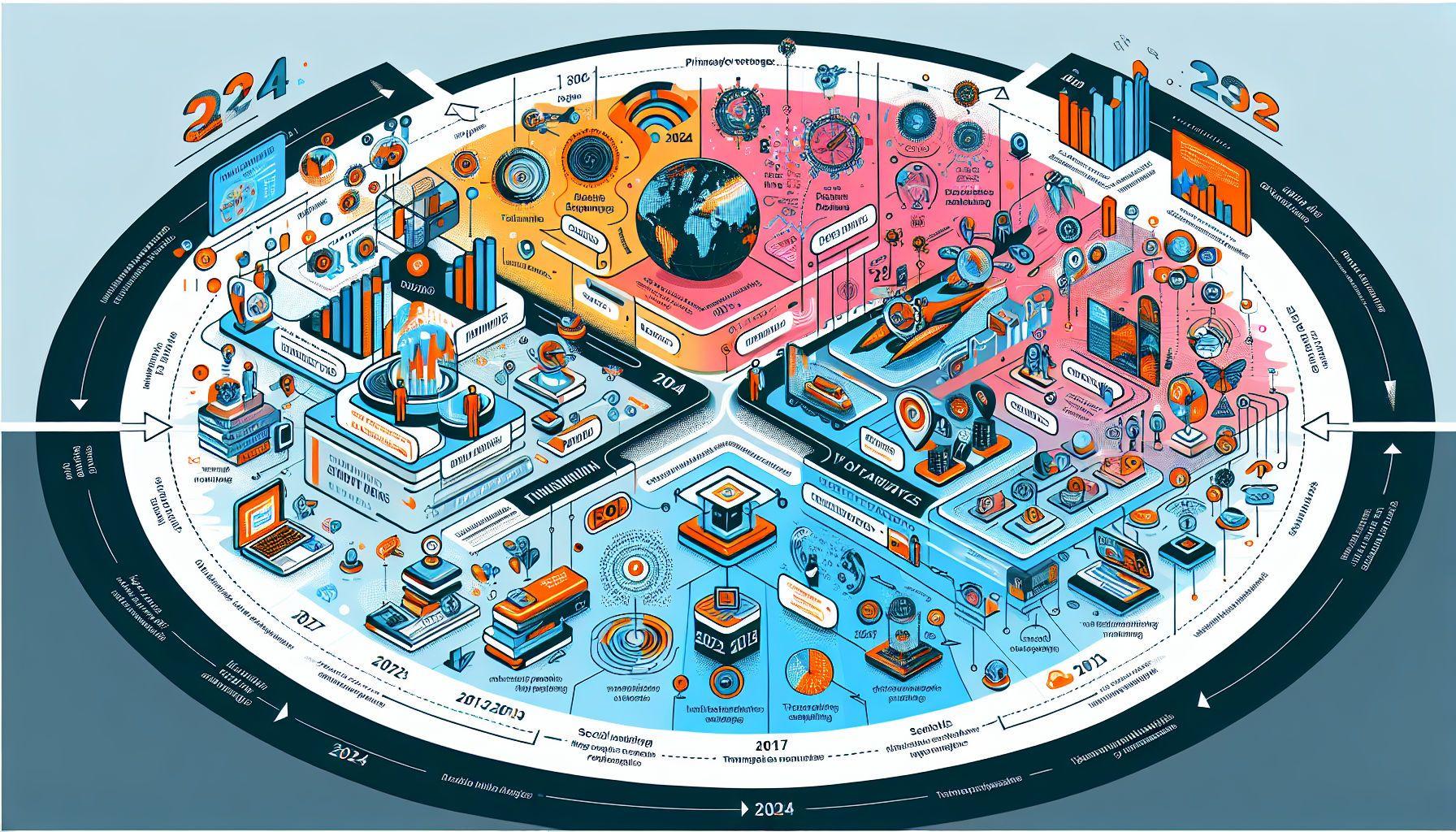The role of augmented reality (AR) in internet marketing
October 21, 2024
•
8 minutes

Content
The Role of Augmented Reality (AR) in Online Marketing
What is Augmented Reality (AR)?
1. IKEA Place: Visualizing furniture in your home
2. Sephora Virtual Artist: Trying on makeup
3. L’Oréal: AR for hair color
4. Warby Parker: Virtual glasses try-on
How AR Influences Marketing Strategy
Practical Recommendations for Using AR in Marketing
Conclusion
The Role of Augmented Reality (AR) in Online Marketing
Augmented reality (AR) is actively transforming the landscape of online marketing, offering brands the opportunity to create unique and interactive ways to engage with their audience. AR technologies allow users to "try on" products, visualize their use, and experience interaction with the brand, significantly increasing engagement and interest in purchases. In this article, we will explore the role of augmented reality in online marketing, key examples of its use, and recommendations for integrating AR into your marketing strategy.
What is Augmented Reality (AR)?
Augmented reality (AR) is a technology that overlays virtual objects and elements onto the real world in real time, using a mobile device or tablet camera. Unlike virtual reality (VR), which fully immerses the user in an artificial world, AR enhances the real world with interactive elements.
Key Benefits of AR for Online Marketing
1. Interactivity and engagement: AR allows users to actively engage with products and brands. This interactive experience increases engagement and makes the brand more memorable.
2. Personalized experiences: AR enables users to personalize their interaction with products. Consumers can try on clothes or accessories, visualize furniture in their homes, and make more informed purchase decisions.
3. Enhanced user experience: AR helps customers better understand products and experience them in real-life contexts, boosting trust and reducing return rates.
Examples of AR Use in Online Marketing
1. IKEA Place: Visualizing furniture in your home
IKEA was one of the first brands to incorporate AR into its marketing strategy by launching the IKEA Place app. This app allows users to "place" IKEA furniture in their home using a smartphone camera to see if it fits their space and style.
Benefits for IKEA:
* Increased conversion rates: The ability to visualize furniture in the home reduces customer hesitation and increases purchase likelihood.
* Lower return rates: Customers make more informed decisions, resulting in fewer returns.
2. Sephora Virtual Artist: Trying on makeup
Sephora uses AR in its Sephora Virtual Artist app, allowing customers to try on makeup using their smartphone camera. Users can preview how lipsticks, eyeshadows, and other products will look on their face before purchase.
Benefits for Sephora:
* Increased engagement: Customers enjoy experimenting with different styles and colors, making the shopping process fun and personalized.
* Increased average order value: Trying multiple products together encourages customers to purchase more items.
3. L’Oréal: AR for hair color
L’Oréal uses AR to let users preview how different hair colors and styles will look on them through the Style My Hair app, making decision-making easier and more interactive.
Benefits for L’Oréal:
* Enhanced product trust: Customers can see the potential results before committing, reducing dissatisfaction.
* Increased sales: AR-assisted decisions boost conversions.
4. Warby Parker: Virtual glasses try-on
Warby Parker allows users to virtually try on glasses through their app, simplifying the selection process and making online shopping more convenient.
Benefits for Warby Parker:
* Higher conversion rates: Virtual try-on increases customer confidence in their selection.
* Fewer returns: Customers choose more suitable frames, reducing returns and exchanges.
How AR Influences Marketing Strategy
1. Interactive advertising and engagement
AR allows the creation of more appealing and interactive ad formats. Users can rotate and explore products, creating an engaging experience and increasing attention.
2. Social media and AR filters
Platforms like Instagram and Snapchat offer AR filters for brand promotion. Brands can design filters that users share, boosting brand reach and awareness.
Example: Coca-Cola launched an AR filter on Instagram that let users "open" a virtual bottle and see campaign-related animations, quickly gaining popularity and increasing campaign visibility.
3. Personalization and customer satisfaction
AR personalizes the buying process by allowing customers to explore products from home. This improves satisfaction and lowers cart abandonment rates.
Practical Recommendations for Using AR in Marketing
1. Assess AR's suitability for your business
AR works best for products that benefit from visual interaction, like fashion, cosmetics, or furniture.
2. Start small
Begin with small projects like an AR filter on Instagram or Snapchat to test audience engagement.
3. Solve customer problems
Use AR to clarify complex products or demonstrate features, improving understanding and purchase likelihood.
4. Integrate with social platforms
Create AR filters for social networks to expand reach and audience engagement.
5. Ensure ease of use
Make your AR applications or features simple and accessible, providing a positive user experience with minimal setup.
Conclusion
Augmented reality (AR) is a powerful tool in online marketing that enhances user experience and increases engagement. The ability to virtually try products and experience interactive elements makes AR a key part of many brands’ strategies. Companies that embrace AR will have greater opportunities to attract customers, improve conversions, and boost loyalty.
Keywords: augmented reality, AR marketing, AR filters, online marketing, interactive advertising, shopping personalization, IKEA Place, Sephora Virtual Artist, Warby Parker AR, user experience improvement.
Recent posts








